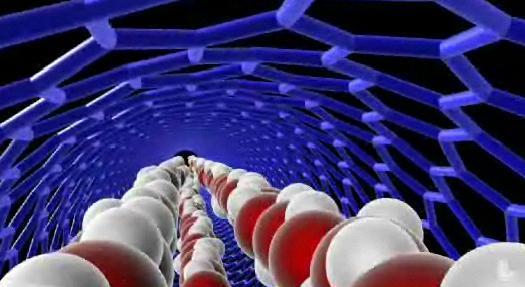The introduction of compounds through cell membranes is essential for many life processes, for example: electrical signaling in nerve cells, muscles and synapses. Researchers from Lawrence Livermore mimic this process using synthetic membranes composed of carbon nanotubes, with cavities XNUMX times smaller than a human hair.

The introduction of compounds through cell membranes is essential for many life processes, for example: electrical signaling in nerve cells, muscles and synapses.
In biological systems, cell membranes often consist of smooth inner surfaces with selective filtration zones that contain defined sub-nanometer sized protein channels. These spaces regulate cellular traffic and allow some of the world's smallest compounds to successfully cross the membrane quickly, while at the same time preventing other small compounds or ions from doing so. Researchers from the Lawrence Livermore National Laboratory imitate this process using synthetic membranes composed of carbon nanotubes, and with cavities one hundred thousand times smaller than a human hair.
The researchers were also able to determine the rejection mechanism of these cavities. "Hydrophobic, tiny-diameter carbon nanotubes can provide a simple model for these membrane channels by mimicking essential properties in a simpler, more rigid template," says the lead researcher. The researchers discovered that water droplets move quickly through the carbon nanotubes and do not "stick" to the inner, slippery surface of the tube, in a manner similar to their behavior in biological channels. The water particles move in the form of a chain, or cluster like a cluster, and this is due to the strong attraction between them as a result of hydrogen bonds. "It can be drawn as a kind of mini-freight trains of water frogs connected as chains "flying" at high speed through a narrow nanotube channel," says one of the researchers on the team.
One of the most promising applications for carbon nanotube membranes is seawater desalination. In the future, these membranes will be able to replace the membranes that are common today and save a lot of energy in desalination. In the current study, the researchers sought to examine whether membranes with cavities measuring 1.6 nanometers repel ions that make up the common salts. In fact, the cavities did repel the ions and the team was able to understand the mechanism involved. "Our study shows that channels with cavities with an average diameter of 1.6 nanometers repel the salts due to the electrical charge at the ends of these carbon nanotubes," says Francesco Fornasiero, one of the members of the research team.
The fast flow through the cavities of the carbon nanotubes makes the membranes composed of them more permeable than membranes with the same cavity size. However, similar to other common membranes, this type repels ions and other particles as a result of a combined effect of the size of the nozzles and the electrical charge in them. Researchers will now be able to build more efficient membranes while precisely controlling the diameter of the spaces, the electric charge in them and various materials to be filled in the spaces between them.
